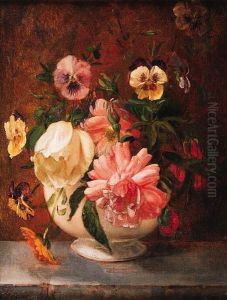William Babcock Paintings
William Babcock was an American artist known for his marine and landscape paintings. Born on August 25, 1826, in New York City, Babcock displayed a talent for art from an early age. He pursued his artistic training at the National Academy of Design in New York, where he honed his skills in drawing and painting. Babcock's work was heavily influenced by the Hudson River School, a mid-19th century American art movement embodied by a group of landscape painters who were inspired by romanticism and emphasized the natural beauty of the American landscape.
Babcock spent a significant portion of his career in Europe, particularly in France, where he was influenced by the Barbizon School, known for their realistic and plein air pastoral landscape paintings. During his time in Europe, Babcock traveled extensively, absorbing various artistic styles and techniques which he incorporated into his own work. His paintings often featured the serene beauty of the French countryside, coastal scenes, and occasionally included figures within these landscapes.
Despite being an American artist, Babcock's work was more widely recognized in Europe during his lifetime, with several of his pieces being exhibited in Paris at the Salon, an official art exhibition of the Académie des Beaux-Arts. His style was characterized by a refined use of light and color, which helped to convey the tranquil and often idyllic settings of his subject matter.
William Babcock's contributions to art were not limited to his paintings. He was also an active member of the American art community, engaging with various artists and participating in the intellectual art circles of his time. Babcock's work has been collected and displayed in several art institutions, reflecting his enduring legacy in both American and European art history.
He passed away on June 16, 1899, leaving behind a body of work that continues to be appreciated for its quiet beauty and technical skill. Through his paintings, Babcock captured the essence of the landscapes he loved, and his works remain a testament to the transatlantic cultural exchanges that enriched 19th-century art.
